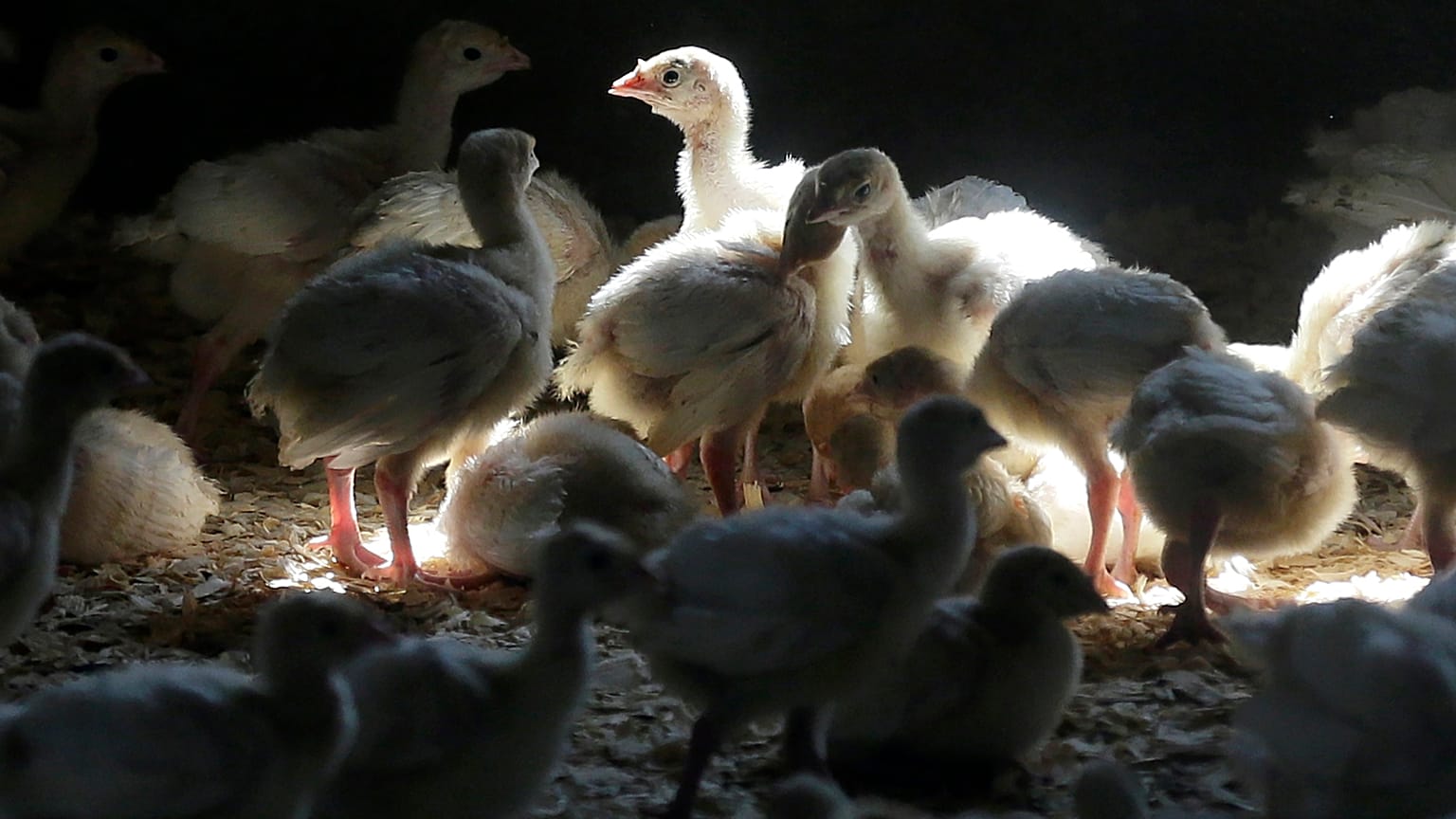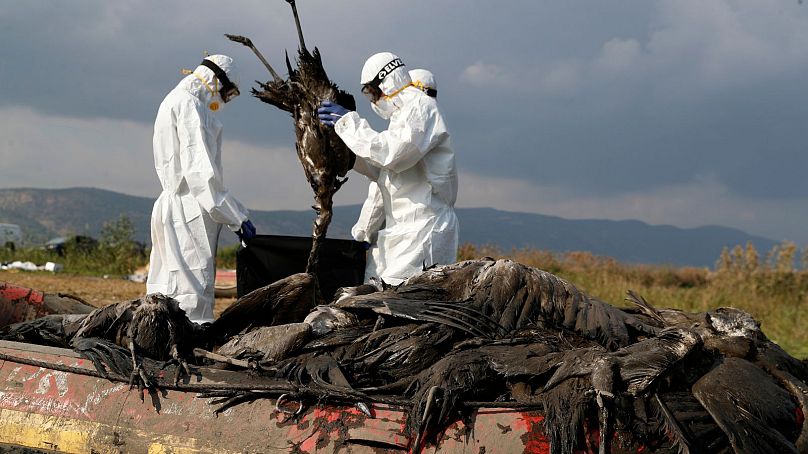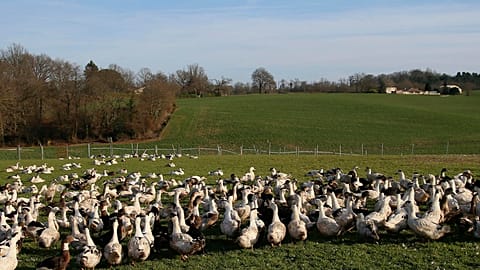The worst outbreak of bird flu in history has been wreaking havoc across the world. But how much of a threat is it to humans?
An 11-year-old girl has died from bird flu in Cambodia’s first known human case of H5N1 since 2014, according to health officials, who said her father had also been infected.
Bird flu, also known as avian influenza, normally spreads in poultry and wasn’t deemed a threat to people until a 1997 outbreak in Hong Kong.
Most human cases around the world have involved direct contact with infected poultry, but cases have recently been recorded in various mammals, reviving fears the virus could mutate to spread more easily to humans.
WHO concerns about bird flu
The girl from the rural southeastern province of Prey Veng became ill on February 16 and was sent to hospital in the capital Phnom Penh. She was diagnosed on Wednesday after suffering a fever up to 39 C with coughing and throat pain and died shortly afterward, the health ministry said.
Symptoms of H5N1 infection are similar to that of other flus, including cough, aches and fever. In serious cases, patients can develop life-threatening pneumonia.
Earlier this month, WHO Director-General Tedros Adhanom Ghebreyesus voiced concern about bird flu infections in mammals including minks, otters, foxes and sea lions.
“H5N1 has spread widely in wild birds and poultry for 25 years, but the recent spillover to mammals needs to be monitored closely,” he warned.
He advised people not to touch dead or sick wild animals and called on countries to strengthen their surveillance of settings where people and animals interact.
The WHO still assesses the risk from bird flu to humans as low, he added.
“But we cannot assume that will remain the case, and we must prepare for any change in the status quo,” he said.
In a very concrete way, the spread of what scientists have confirmed is the world's worst bird flu outbreak - which has now been unfolding for over a year - is already affecting us.
The disease is one of the contributing factors making both poultry meat and eggs more expensive, together with the lingering impact of COVID-related disruptions and the Russian invasion of Ukraine.
Overall, the outbreak is exacerbating the cost of living crisis, disrupting food supply chains and forcing the culling of millions of poultry destined to end up on the shelves of our grocery retailers.
Is bird flu getting worse?
One of the biggest concerns for humans is also that the rampaging bird flu could enter territories previously uncharted - including mutating into the next pandemic.
"The situation is unprecedented. Last winter we had the worst outbreak of highly pathogenic avian influenza in the UK. This year is on track to equal or beat that", Professor Paul Digard, Chair of Virology at the University of Edinburgh, told Euronews Next.
"It's unprecedented because of the number of those infection numbers that have occurred in poultry and because of the infections that we've seen in wild birds as well, particularly seabirds", he continued.
"The other thing that's changed is that normally, in northern Europe and the UK, we get sporadic incursions of high pathogenic avian flu in the winter, but then they disappear over the summer.
“Last summer, it never entirely went away, it died down quite a lot, but it never fully went away. So the virus has changed its behaviour in ways that we've not seen before in this part of the world".
While bird flu - or highly pathogenic avian influenza, to be exact - has been around for at least 200 years and probably more, said Digard, outbreaks have become more common.
"The numbers [of outbreaks] have picked up since the 1980s, and then everything changed in 1996-97 when the ancestor of the current virus appeared in Hong Kong," Digard said.
"And that virus was different from all the previous ones in that it could survive in wild birds as a sort of a long-term infection, and that gave it the ability to spread around the world so that that virus or descendants of it have been with us for the last 25 years.
"And the number of outbreaks of that lineage of the virus has been very large indeed. The numbers are higher than they've been in the past. That's probably fair to say".
What's the risk to humans?
"There is a risk to human health, but at the moment I would say it's low", said Digard.
During the 1997 outbreak, 18 people got infected with bird flu, and six died.
"It was a rare infection in humans, but when it did happen, it had roughly a 50 per cent case fatality rate", said Digard.
Until at least the early to mid-2010s, the situation stayed the same, said Digard, with very rare cases of human infections but causing severe illness in those who contracted the virus.
"Since then the virus has changed, and from the human perspective, it has changed for the better", said Digard. "It seems to be causing far fewer human infections, and when it does infect people, it seems to cause milder disease in most people".
So, the risk to human health is lower than it has been in the past, and there's no need to panic.
"This lineage of the virus has been with us for 25 years and in that time, although it's been able to infect people, it's never shown any signs of really evolving the ability to transmit from person to person, which is what you would need for a major outbreak in humans," said Digard.
But chances are that the virus might change in the future.
Health authorities in the UK are now modelling scenarios to assess what might happen should the virus mutate and spread more aggressively among humans, sparking a new health crisis similar to the COVID-19 pandemic.
"Like COVID, [the bird flu virus] is permanently changing, it never stays still," said Digard.
"You can't say it will never adapt, it'll never change in a way that will cause the next pandemic, but I think it’s very low-risk at the moment," he continued.
"I don't think it's low-risk that we'll get another flu pandemic; I think that's the case of when not if. But my guess would be it's not going to be this strain. It'll be something else that catches us by surprise".
After the outbreak of COVID-19, which is believed to have spilled over from a yet unidentified animal into humans, experts warn that the next pandemic will likely come from another zoonotic disease like coronavirus.
"This is a problem that's grown over the years. But we have become better able to try and head off some of these problems," said Digard.
We have found a way to create vaccines against the flu - including the H5 virus strain - and we are able to produce them on a large scale.
Researchers are getting better at the "social science's side of things, trying to understand the factors that make zoonotic diseases more of a threat, as you get larger numbers of people and more contact between people and food animals and food animals and wild animals," said Digard.
In this context, the way we farm animals for the meat and dairy market is of crucial importance to avoid virus spillovers.
"We can change your security procedures, you can change the way you design farms to reduce the chance of those transmission events happening in the first place".



















